Tyrosine Kinase
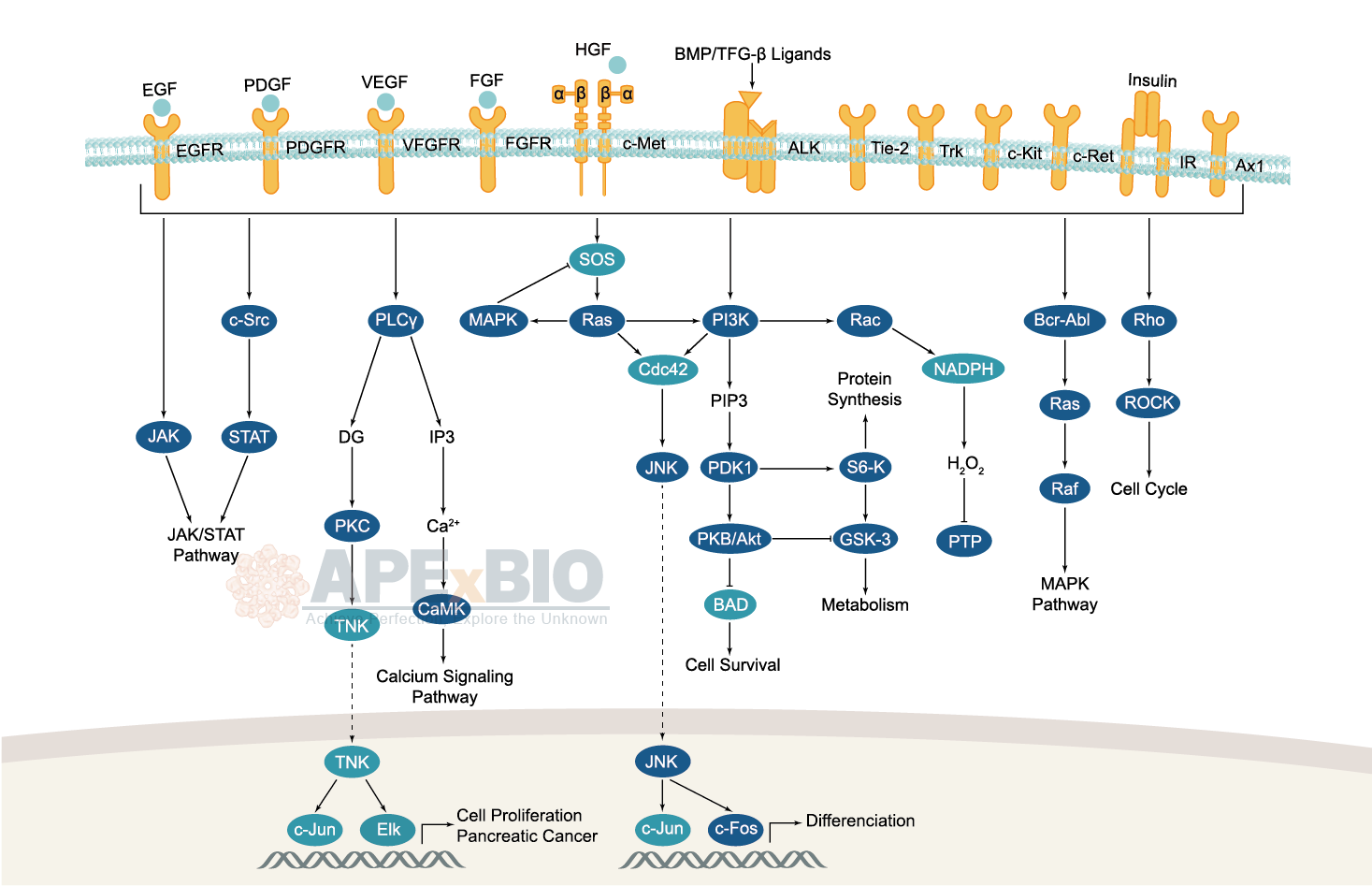
Receptor tyrosine kinases bind to extracellular ligands/growth factors, which promotes receptor dimerization and autophosphorylation of receptor tyrosine residues. This triggers a cascade of downstream events through phosphorylation of intracellular proteins that ultimately transduce the extracellular signal to the nucleus, causing changes in gene expression. Receptor tyrosine kinases include EGFR/ErbB, PDGFR, VEGFR, FGFR and MET subfamilies etc. Dysfunctions in tyrosine phosphorylation are linked to oncogenic transformation. In additions, various adaptor and effector proteins couple to carboxy-terminal of an active kinase. For instance, binding of the GRB2 adaptor protein activates EGFR and MAPK/ERK signaling.
Non-receptor tyrosine kinases involve many well-defined proteins (e.g. the Src family kinases, c-Abl, and Jak kinases) and other kinases which regulates cell growth and differentiation. For example, Src family kinases are curial for activating and inhibitory pathways in the innate immune response.
-
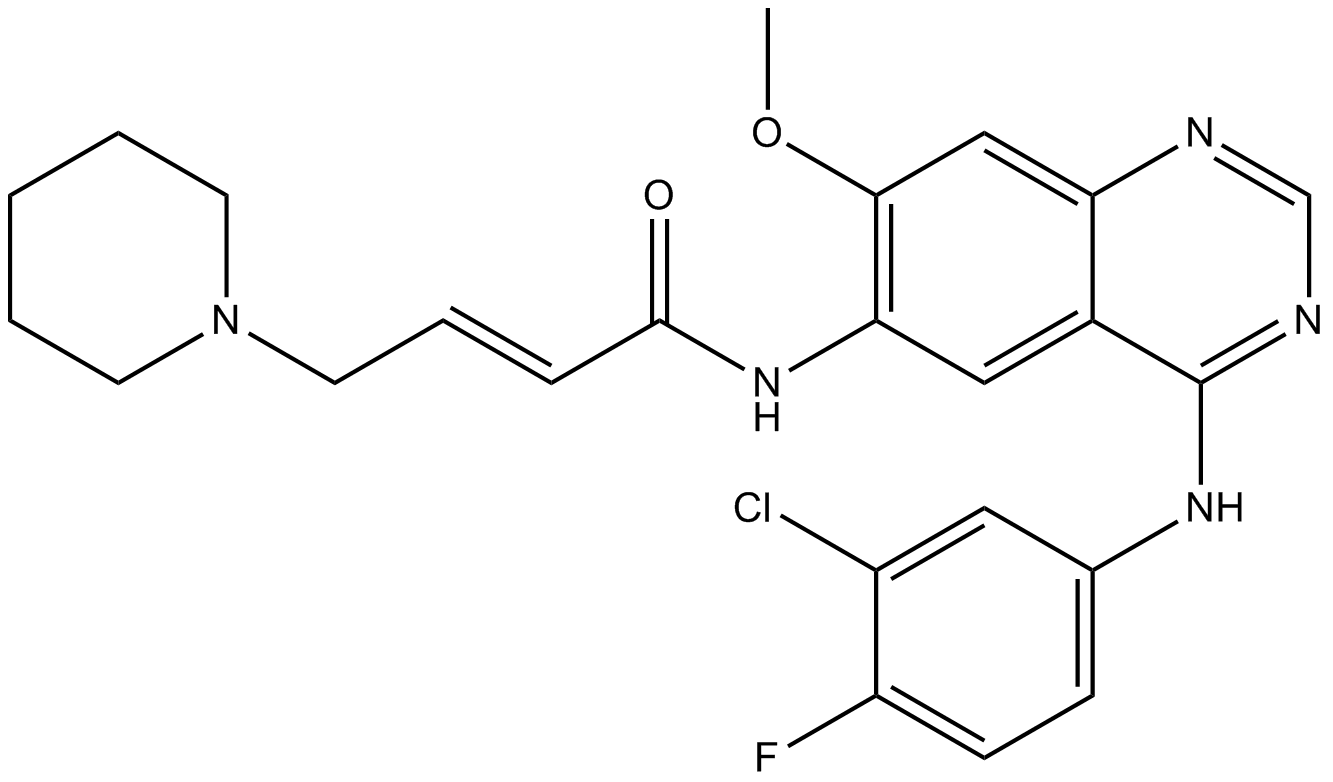 A8319 Dacomitinib (PF299804, PF299)Target: ErbBSummary: HER inhibitor
A8319 Dacomitinib (PF299804, PF299)Target: ErbBSummary: HER inhibitor -
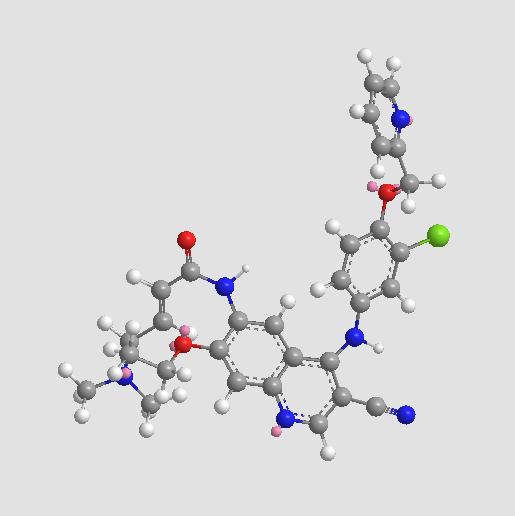 A8322 Neratinib (HKI-272)1 CitationTarget: EGFRSummary: HER2/EGFR inhibitor,potent and irreversible
A8322 Neratinib (HKI-272)1 CitationTarget: EGFRSummary: HER2/EGFR inhibitor,potent and irreversible -
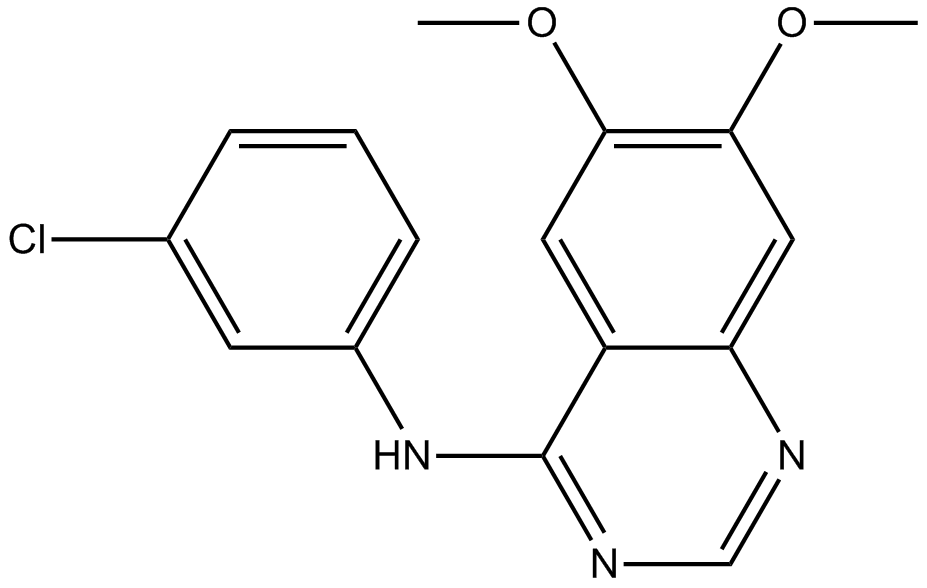 A8357 AG-1478Target: EGFRSummary: EGFR inhibitor,potent and selective
A8357 AG-1478Target: EGFRSummary: EGFR inhibitor,potent and selective -
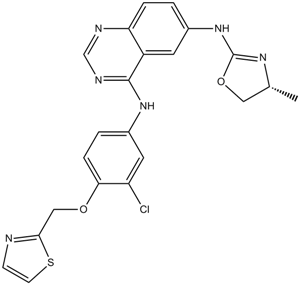 A8365 Varlitinib (ARRY334543)Summary: ErbB inhibitor
A8365 Varlitinib (ARRY334543)Summary: ErbB inhibitor -
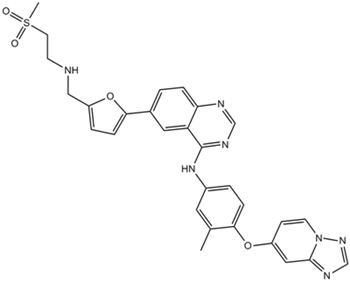 A8366 ARRY-380Target: HER2Summary: Tyrosine kinase HER2 and p95-HER2 inhibitor
A8366 ARRY-380Target: HER2Summary: Tyrosine kinase HER2 and p95-HER2 inhibitor -
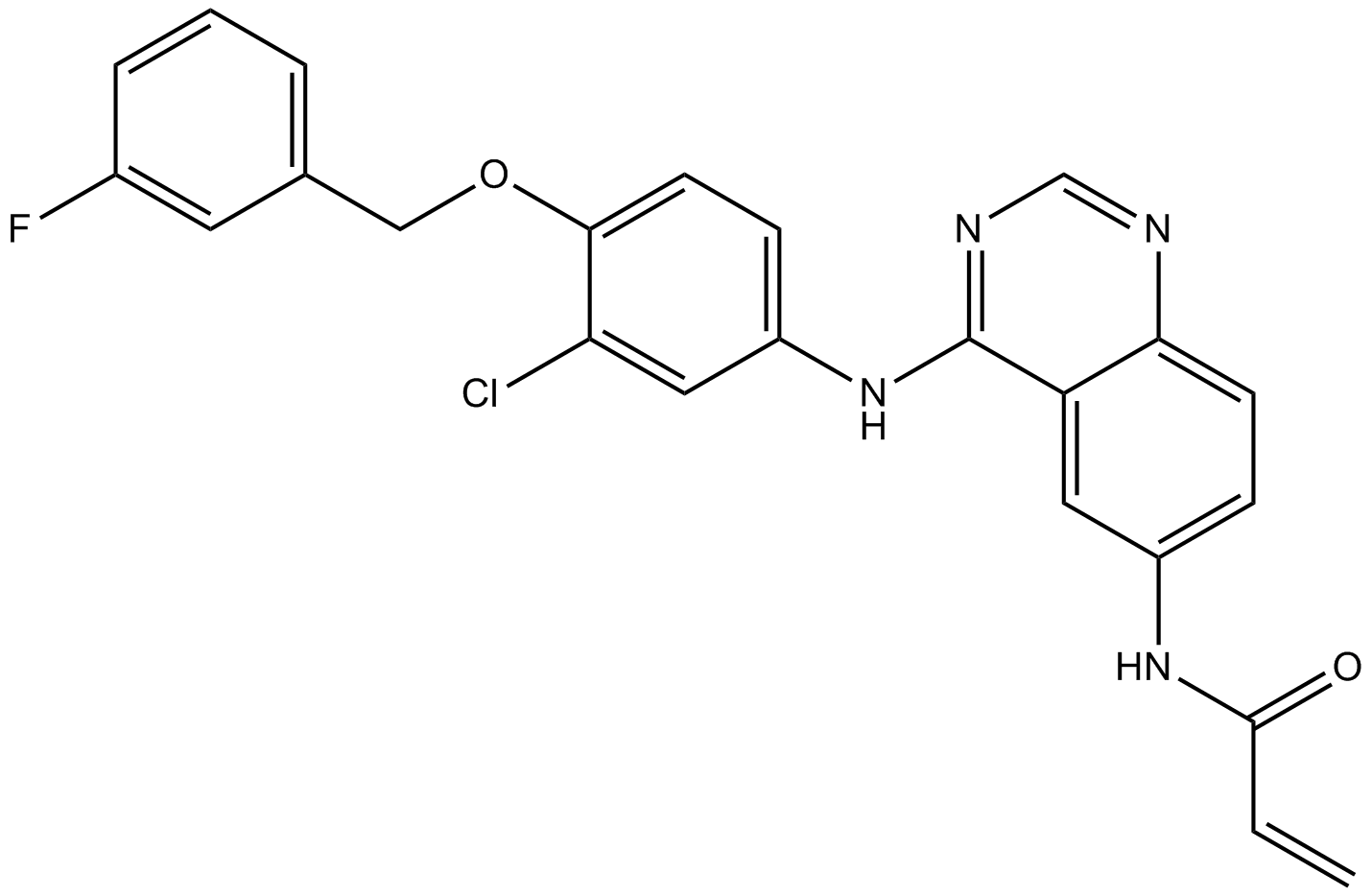 A8367 AST-1306Summary: EGFR/HER2 inhibitor
A8367 AST-1306Summary: EGFR/HER2 inhibitor -
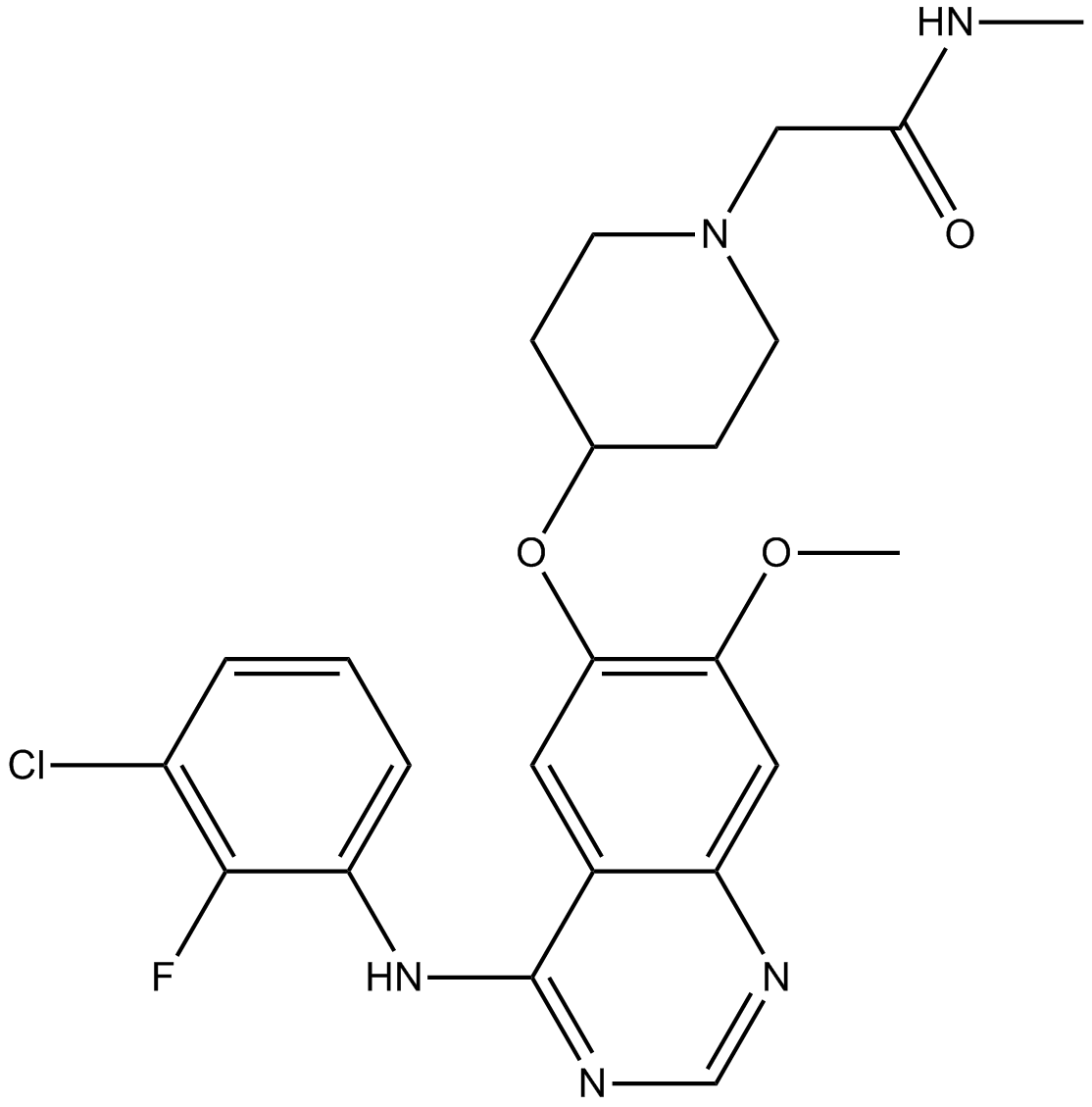 A8375 AZD8931 (Sapitinib)Target: EGFR|ErbBSummary: ErbB inhibitor
A8375 AZD8931 (Sapitinib)Target: EGFR|ErbBSummary: ErbB inhibitor -
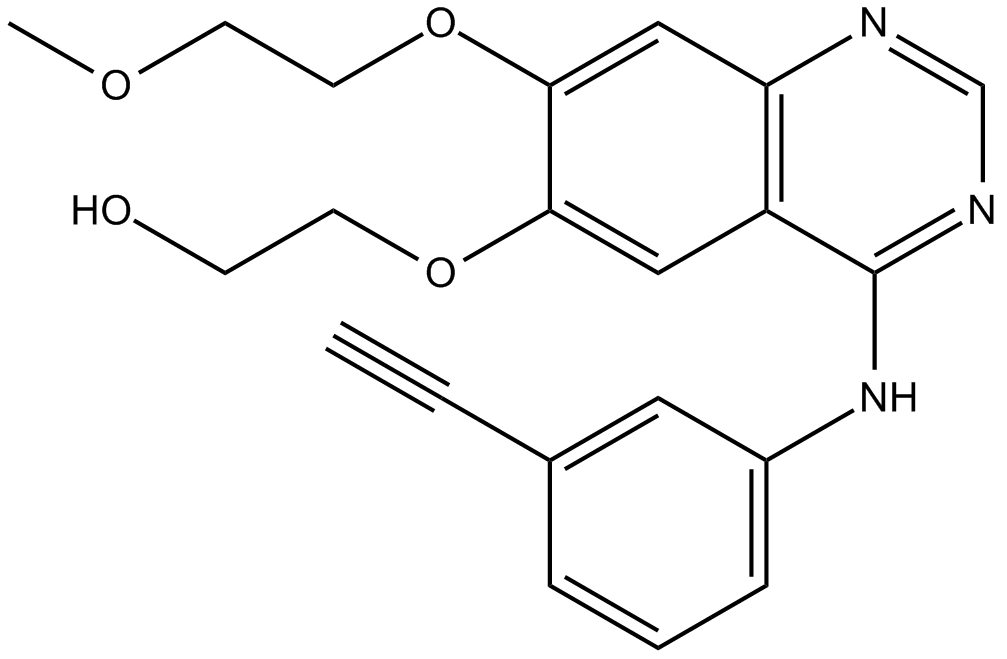 B1495 OSI-420 free baseSummary: EGFR inhibitor
B1495 OSI-420 free baseSummary: EGFR inhibitor -
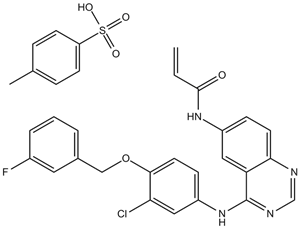 B1020 AST-1306 TsOHSummary: ErbB2 and EGFR inhibitor
B1020 AST-1306 TsOHSummary: ErbB2 and EGFR inhibitor

